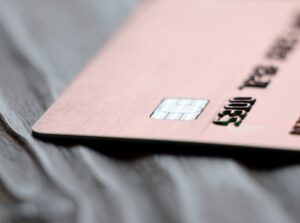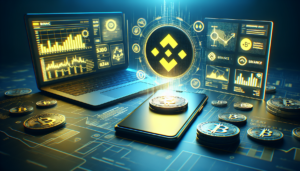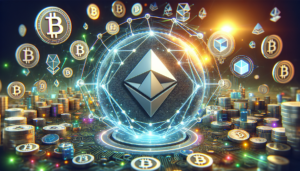What is an NFT?
NFTs, or non-fungible tokens, have taken the digital world by storm. These unique digital assets are verified on a blockchain, providing a new way for creators to monetize their work and for collectors to own one-of-a-kind items. NFTs can represent a wide range of digital content, from art and music to videos and collectibles.
Understanding Non-Fungible Tokens
Unlike traditional cryptocurrencies like Bitcoin, which are fungible (meaning each unit is interchangeable), NFTs are non-fungible. Each NFT is distinct and carries its own value based on its rarity, authenticity, and perceived worth. Ownership of an NFT is established through a token on the blockchain, not the digital item itself. This means that while anyone can view or download the associated digital media, only the token holder is recognized as the official owner.
The Role of Blockchain in NFTs
Blockchain technology plays a crucial role in the creation and management of NFTs. By storing NFTs on a decentralized, immutable ledger, blockchain ensures the security and transparency of ownership. Popular blockchains for NFTs include Ethereum, known for its compatibility with major NFT marketplaces, and Solana, which offers faster transaction speeds and lower gas fees. Other blockchains like Flow have also gained traction, particularly in the realm of sports and gaming NFTs.
Choosing the Right Blockchain for Your NFT
When creating an NFT, one of the first decisions you’ll need to make is choosing the right blockchain. Each blockchain has its own strengths and weaknesses, so it’s essential to consider factors like transaction costs, speed, and ecosystem support.
Ethereum: The Popular Choice
Ethereum has long been the go-to blockchain for NFTs, thanks to its robust ecosystem and the popularity of the ERC-721 token standard. Many of the most well-known NFT marketplaces, such as OpenSea, are built on Ethereum. However, Ethereum’s popularity has also led to high gas fees, which can make minting and transferring NFTs expensive.
Solana: A Cost-Effective Alternative
Solana has emerged as a popular alternative to Ethereum for NFT creators looking to minimize costs. With its high-performance architecture and lower gas fees, Solana allows for more affordable NFT minting and trading. Platforms like Solanart and Solsea have gained traction as Solana-based NFT marketplaces.
Flow: Ideal for Sports and Gaming NFTs
Flow is a blockchain designed specifically for NFTs and decentralized gaming applications. It has gained notable partnerships in the sports world, hosting popular NFT collections like NBA Top Shot. Flow’s architecture is optimized for fast, low-cost transactions, making it an attractive option for high-volume NFT projects.
Setting Up Your NFT Wallet
To create and manage your NFTs, you’ll need a compatible crypto wallet that supports the blockchain you’ve chosen. NFT wallets allow you to store, send, and receive NFTs securely.
Popular NFT Wallets
Some of the most popular NFT wallets include:
- MetaMask: A browser extension and mobile app that supports various cryptocurrencies and both Ethereum and Solana blockchains.
- Coinbase Wallet: A user-friendly wallet that supports ERC-721 tokens on Ethereum and Solana NFT collections.
- Ledger Nano X: A hardware wallet that offers secure, offline storage for your NFT keys on multiple blockchains.
Securing Your NFT Wallet
When setting up your NFT wallet, security should be a top priority. Always keep your private keys and seed phrases confidential, and consider using a hardware wallet for added protection. Be cautious of phishing scams and only interact with reputable NFT platforms and marketplaces.
Creating Your Digital Media
At the heart of every NFT is a unique piece of digital media. This can be an image, video, audio file, or even a tweet. The possibilities are endless, but it’s crucial to create high-quality, original content that will capture the attention of potential buyers.
Types of Digital Media for NFTs
Some of the most common types of digital media used for NFTs include:
- Digital Art: From illustrations and paintings to 3D renderings and animations.
- Music: Songs, albums, or even snippets of audio can be turned into NFTs.
- Videos: Short clips, GIFs, or full-length videos can be minted as NFTs.
- Collectibles: Digital trading cards, virtual real estate, and in-game items are popular NFT collectibles.
Preparing Your Digital Media File
When preparing your digital media file for minting, ensure that it is in a supported format and meets any size or resolution requirements set by the NFT platform you plan to use. Many NFT marketplaces have specific guidelines for file types and sizes, so be sure to review these before uploading your content.
Minting Your NFT
Once you’ve chosen your blockchain, set up your wallet, and created your digital media, it’s time to mint your NFT. Minting is the process of turning your digital file into a token on the blockchain.
Uploading Your Digital Media
To begin the minting process, you’ll need to upload your digital media file to an NFT marketplace or platform. This typically involves creating an account, connecting your wallet, and following the platform’s instructions for uploading your content. Be sure to provide an accurate title, description, and any relevant metadata for your NFT.
Setting Up Smart Contracts
NFTs are governed by smart contracts, which are self-executing contracts with the terms of the agreement directly written into code. When minting your NFT, you’ll need to interact with a smart contract to establish ownership and any additional rules or benefits associated with your token. Many NFT platforms have user-friendly interfaces that simplify this process, but it’s still important to understand the basics of smart contracts.
Paying Gas Fees
Minting an NFT requires a transaction on the blockchain, which means you’ll need to pay a gas fee. Gas fees are payments made to compensate for the computing energy required to process and validate transactions. The cost of gas fees can vary depending on the blockchain and current network congestion. On Ethereum, gas fees can be quite high during peak times, while Solana and other alternative blockchains typically offer lower fees.
Listing Your NFT on Marketplaces
After minting your NFT, you’ll likely want to list it for sale on an NFT marketplace. These platforms connect buyers and sellers, allowing you to showcase your NFT to a broader audience.
Popular NFT Marketplaces
Some of the most popular NFT marketplaces include:
- OpenSea: The largest NFT platform, supporting Ethereum, Solana, and Polygon blockchains.
- Rarible: A community-owned marketplace that supports multiple blockchains and offers customizable storefronts.
- Mintable: A user-friendly platform that allows creators to mint NFTs without upfront gas fees.
Listing Fees and Gas Fees
When listing your NFT for sale, you may encounter additional fees. Some marketplaces charge a listing fee, which is typically a small percentage of the final sale price. You’ll also need to pay a gas fee for the transaction required to transfer ownership of the NFT to the buyer. Consider these costs when pricing your NFT to ensure a fair return on your investment.
Ensuring Security and Copyright
As with any valuable digital asset, security and copyright considerations are crucial when creating and selling NFTs.
Protecting Your Digital Assets
To protect your NFTs, always keep your wallet’s private keys and seed phrases secure. Avoid sharing sensitive information online and be cautious of phishing scams that may attempt to steal your NFTs. When trading NFTs, only use reputable marketplaces and verify the authenticity of any tokens before making a purchase.
Understanding Copyright Ownership
When creating an NFT, it’s important to understand copyright ownership. While selling an NFT transfers ownership of the token, the creator generally retains the copyright to the underlying digital media. This means that the creator can still use and reproduce the work, while the NFT owner holds a unique token associated with that media. Be transparent about copyright terms when listing your NFTs to avoid confusion or disputes down the line.
Maximizing the Value of Your NFT
Creating a successful NFT involves more than just minting a token. To maximize the value of your NFT, you’ll need to stay attuned to market trends and engage with the NFT community.
Market Trends and Community Engagement
Keeping an eye on current market trends can help you create NFTs that resonate with collectors and investors. Engage with the NFT community on social media platforms like Twitter and Discord to build relationships, share your work, and gather feedback. Participating in community events and collaborations can also help increase the visibility and perceived value of your NFTs.
Rarity and Authenticity
Rarity and authenticity are key drivers of NFT value. Limited edition or one-of-a-kind NFTs often command higher prices due to their scarcity. Providing provenance information and using verified accounts on NFT platforms can help establish the authenticity of your tokens. By creating unique, high-quality NFTs and building a strong reputation within the community, you can increase the value of your digital assets over time.
See also:
- What Is an NFT Art? Understanding Non-Fungible Tokens in the Art World
- How to Sell NFT: A Step-by-Step Guide for Beginners
- What Does It Mean to Mint an NFT? Understanding the Process
- What Does NFT Mean? Understanding Non-Fungible Tokens Explained
- What Is NFT Mean? Understanding Non-Fungible Tokens Explained






